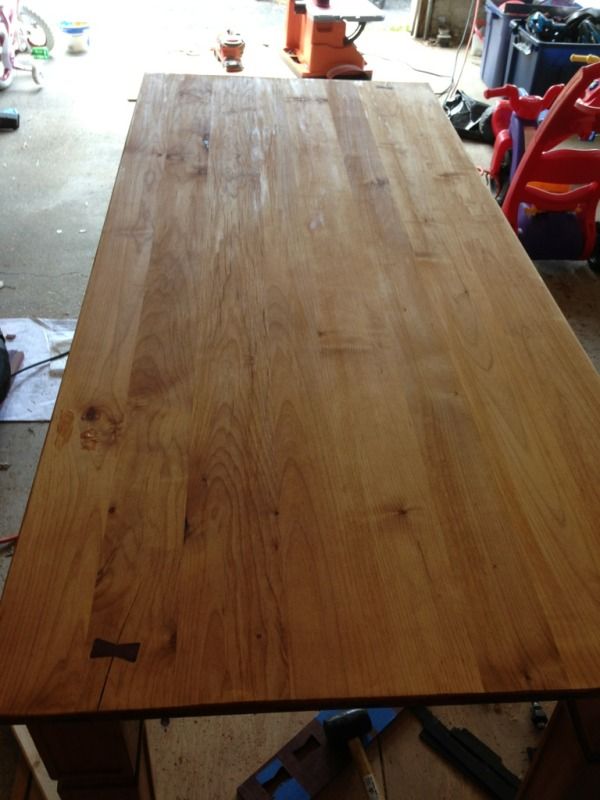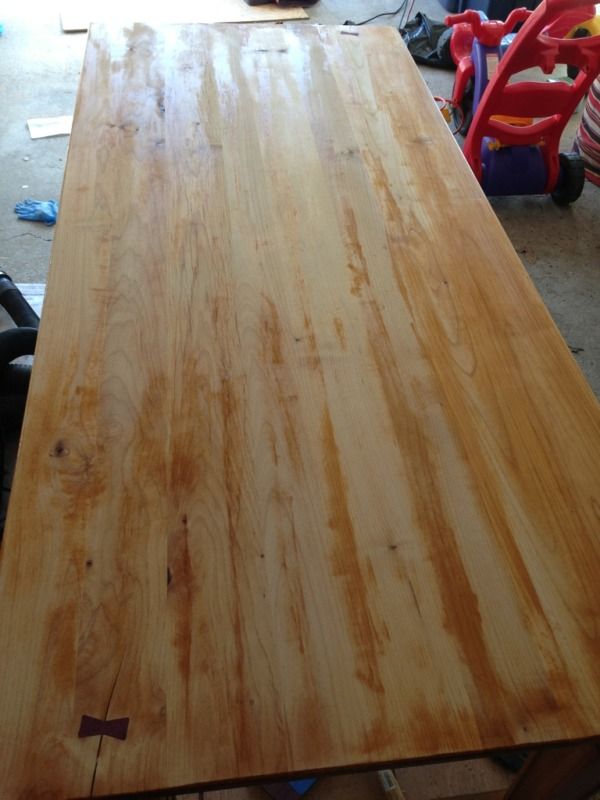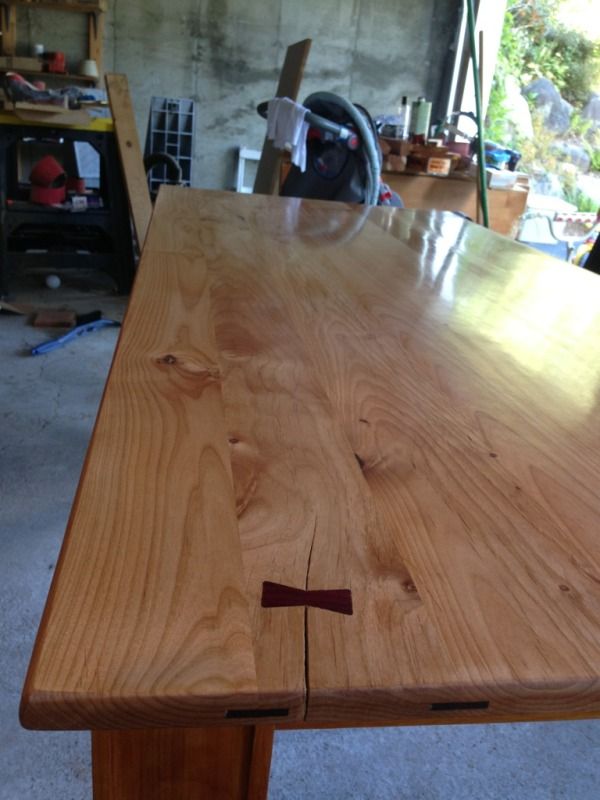Ok, so my shellac skills when shifting from small furniture to big items like desktops fall far short of where they need to be. I'm using a 2 lb pre mix cut of amber (Zinsser in a can, etc.), pretty fresh stuff. I'm working on a 68" x 30" desk top, and the speed at which shellac dries on this large a surface area caught me off guard. Basically I was left with puddles, some drips, but lots and lots of brush strokes where I reversed brush direction (yes, I know now that was a no-no. Mistakes are learning tools). I applied alcohol to smooth things out, and of course... that got me no where. I've taken 80 grit via the random orbital to it, and I've gotten to this point:
I've removed the problem areas, but off course the shellac that has settled in areas where I over-sanded originally post glue-up is proving much more challenging to remove. Here's my question:
if I use a modified French polish technique (not aiming for glossy build up but otherwise using the technique) should I be able to hit the sanded areas and blend in the entire desktop to have a finished, single nice shade of amber? Or do I need to take the entire table top back to 100% wood?
Thanks! By the way, something about the amber shellac really brings out the purple in purpleheart... once I'm done the butterflies will get an anti-uv dose of poly to preserve the purple.
Thanks much in advance,
Scott
I got restless... I stripped it to the wood with CleanStrip, the orange citrus stuff. Next time I'll skip the sanding step, was really easy. Am going to let it dry, clean it with mineral spirits, then will try again. Actually, the wood is left with a bit of the amber color, nicely and evenly spread through the tabletop, even though the shellac is all gone:






 Reply With Quote
Reply With Quote





